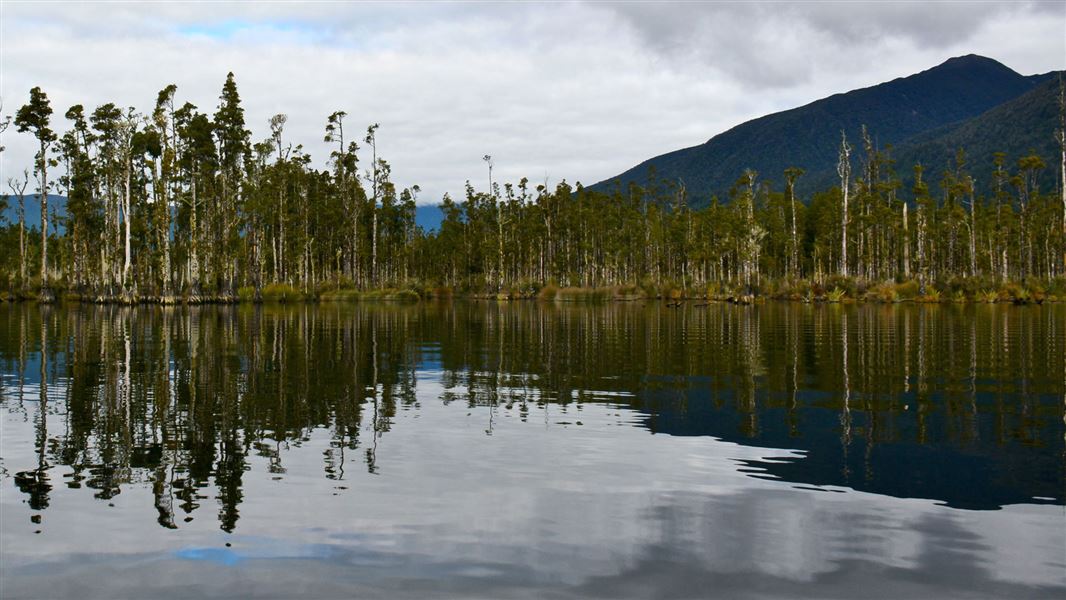Visit Jack's Mill School where the miniature bungalow was designed, built and furnished entirely by school children from 1938-40 for experiential learning.
Lake Brunner is 37 km from Greymouth. Drive inland from Greymouth on SH7 for 14 km until you reach Stillwater. Turn right onto the road to Moana and Inchbonnie and drive until you come to Lake Brunner.
Lake Brunner can also be reached by turning onto the Lake Brunnner Rd at Jacksons on SH73 between Christchurch and the West Coast. Jacksons is 45 km inland from the Kumara Junction.
The walks and tracks in this area vary greatly in terms of safety and equipment requirements.
While the shorter walks can be done in ordinary clothes and footwear, the longer tracks call for something extra. This applies particularly to the route from the lookouts on Ara O Te Kinga to the top of the mountain and the entire Mt French, Crooked and Camp Creek routes. These routes are steep and slippery in places and even on fine days the tops can become clouded quickly making navigation difficult on the rugged tops.
Wear sturdy footwear (preferably boots), carry warm, waterproof clothing and take enough snacks, drinking water and equipment needed for a full day walk. If venturing along the tops take a map.
Even before walking a short track let a reliable person know where you are going and an estimated time of return. It is essential in the case of longer tracks such as Bain Bay and any part of Ara O Te Kinga, Mt French and the other routes surrounding the area.
Weather
Weather conditions can change rapidly on the tops. Rain can quickly make even small streams treacherous to cross. Before starting out it is best to check for the latest weather and track finformation. Bad weather can also make the surface of the lake rough.
Lake Brunner is a holiday destination abundant with both water and land based activities. Only 37km inland from Greymouth, Moana is serviced daily by both the TranzAlpine train and a variety of shuttle buses.
If you have a couple of hours or a couple of days this is a great area to get out and explore. There are a range of walks available in the area ranging in duration from 20 minutes to 8 hours.
Lake Brunner is the largest lake in the northwestern South Island of New Zealand, covering an area of 39 km2. It was gouged out by a branch of the Taramakau Glacier and is one of a cluster of lakes within this sector of the Grey River catchment including Poerua, Kangaroo, Lady, Haupiri, Hochstetter and Ahaura.
The lake is fed by the Crooked, Orangipuku and Eastern Hohonu Rivers and a number of small streams. Its outflow is the Arnold River, a tributary of the Grey River. The Lake Brunner area has an abundance of bird life and a variety of wetland and rain forest ecosystems.
The Maori name for the lake is Kotuku Whakaoho, meaning the 'sea of herons'. The present name commemorates Thomas Brunner who, in 1848, became the first European to see the lake during his epic 550 day exploration of the region with Kehu and other Maori guides.
Paparoa National Park Visitor Centre
| Phone: | +64 3 731 1895 |
| Email: | paparoavc@doc.govt.nz |
| Address: | 4294 Coast Road Punakaiki RD 1 Runanga 7873 |
| Hours: | Visitor centre hours and services |
